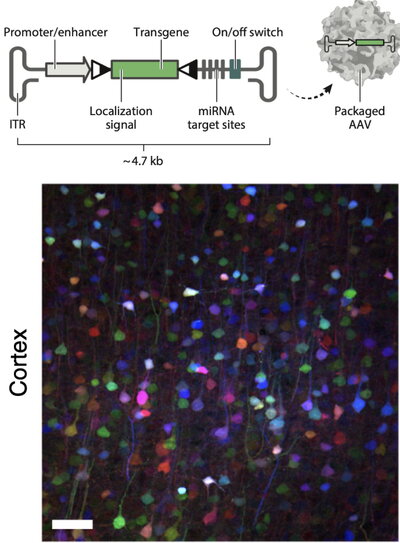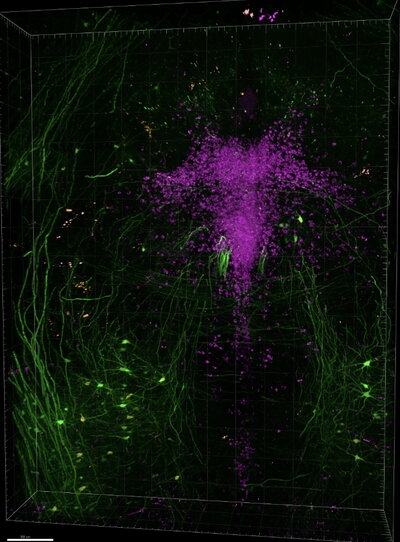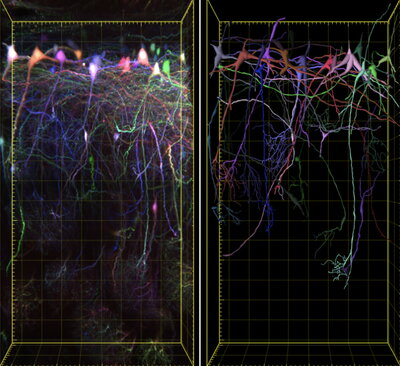The Jang Lab explores the genetic code of the brain, trying to find answers to important questions like:
- How is the distinct molecular composition of cell types related to other properties?
- What should be targeted in the context of modulating brain function?
- How can we effectively and precisely target them?
Our lab aims to gain a deeper understanding of how the nervous system functions by studying its genetic code. We use this knowledge to design specialized tools, such as engineered viral vectors, to deliver therapeutic genes throughout the body. Our research integrates approaches such as vector engineering, multimodal brain mapping, and large-scale neurodata analysis to support and expand our discoveries.
Our Principal Investigator is Min Jee Jang.
For more info, visit our website.
Vector Engineering

Vector Engineering allows for more efficient and specific delivery of genetic materials to brain cells. We are engineering viral vectors with a focus on genomic components, enhancing the ability to target cell types of interest with high precision. The vectors ultimately allow for safer and more effective clinical applications of genetic materials.
Multi-Modal Brain Mapping
Multi-Modal Brain Mapping utilizes high-resolution imaging, multiplexed molecular labeling, and tissue clearing. It allows us to understand how the genes influence the way the brain is built, how it's organized, and how it works. By establishing connections between genetic codes to their diverse phenotypes, we hope to gain new understandings of the brain's mechanisms and develop more tailored therapeutic genes.

Big NeuroData Analysis
Big NeuroData Analysis generates large amounts of data with various types of information. Our lab is trying to design and develop computational tools to help analyze these datasets and help provide interpretations of how different parts of the brain are linked and work together.
